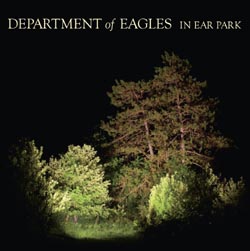
Manufactured Landscapes, another, yet far more interesting, essay on the threatening state of ecology in the world, kicks off with a superior eight minute tracking shot. The subject? A Chinese factory as long as several football fields. The scene is boldly transfixing partly because it finds the sublime in an activity so alien to Western culture yet so pertinent, but also because it is a shocker to see a documentary open with the kind of visual bravura one would expect from either a cinema giant like Kubrick or Greenaway, or a modern minimalist. A narration arises after about six minutes; the voice is of Edward Burtynsky, the photographer whose work is the crux of the documentary.
His photographs are aesthetically striking to begin with but are also telling of humanity's inevitable "manufacturing" of natural landscapes: strip mining operations, oil drilling, and the building of the largest dam in history, the Three Gorges Dam. China is the featured setting of the film, which finds director Jennifer Baichwal following Burtynsky as he works, but as Burtynsky mentions, these environmental changes are actually universal. They are merely exemplified best by the thriving urbanization in modern China. Burtynsky, whose mission is to merely reveal without bludgeoning his audience (he is neither applauding the situation nor "damning" it), creates fine works that rely heavily on the fact that they are persuasive and open-ended. This is largely what Baichwal attempts to do with her film. She succeeds in avoiding a didactic approach, aiming for a more ambiguous, visceral documentary (which uses moody mid-frequency noise as a soundtrack, courtesy of Dan Driscoll).
Suffice to say, the film loses a bit of its visual intrigue after the opening, when it begins to weigh the slideshow presentation of Burtynsky's photographs more heavily than the moving images. The film offers no more handsomely filmed tracking shots; instead it simply contextualizes the world of Burtynsky's photographs by charting the meticulous, often times dangerous work of the Chinese laborers who utilize Earth's resources to create products that fuel nearly every commonplace deed in the world. Fortunately Baichwal accomplishes this, however, she falls slightly short of the frightening power of the original photographs (in order to magnify the force of a scene where Burtynsky reveals a panoramic image he just shot involving some Three Gorges workers, Baichwal zooms in on the photograph and hangs on it to revel in its grandiosity rather than capture it with her moving camera).
It's interesting to see how both the film and the photographs that are documented reflect the cinéma vérité theory, sanctioned by documentarist Jean Rouch which stated that the camera does indeed affect its subjects, and therefore its presence should me made known. In the opening tracking shot, several workers pause to stare at the camera as it glides by, and later on a frozen photograph shows a whole room of workers gazing into the lens. A fascinating aspect of a film dealing with photography. There is a fine moment in the film when a withered old woman knits steadfastly in her stripped home, refusing to leave her familiar lifestyle as the world around her falls apart. Although she is a fitting metaphor for nature and the old world, an entity that has shifted towards the new, man-made forces, this may have been the moment that Baichwal became persuasive rather than evocative, a conflict Burtynsky has sought out to avoid.







.jpg)








